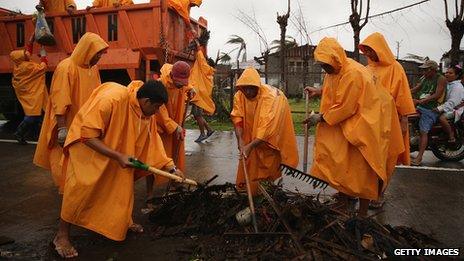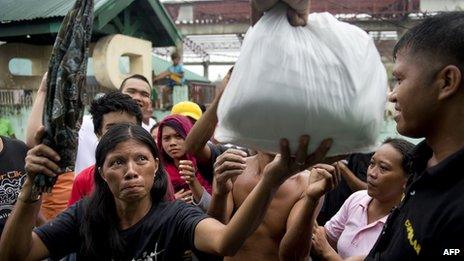Typhoon Haiyan death toll rises over 5,000
- Published
The BBC's Tulip Mazumdar reports on a school building which has become home for scores of typhoon survivors
The death toll from Typhoon Haiyan has risen above 5,000, officials in the Philippines say, two weeks after the devastating storm hit the country.
The country's National Disaster Agency says that 5,209 people are now known to have lost their lives, with many more still missing.
That makes Haiyan, known as Yolanda in the Philippines, the deadliest natural disaster in the country's history.
Floods in the Ormoc region in 1991 killed 5,101 people.
Haiyan was one of the most powerful typhoons ever recorded.
Flattened
Winds of up to 270km/h hit the central Philippines when it made landfall on 8 November.
Parts of low-lying islands were completely flattened.
Eduardo del Rosario, executive director of the Philippines' National Disaster Risk Reduction and Management Council, said that more than four million people were displaced by the storm.
Over a million houses were damaged.
Many residents in the worst hit areas are still without proper shelter as they try to rebuild their homes.

Part of the recovery work is to clear roads so deliveries can get through


Residents of Tacloban who have lost everything exist on food parcels
Many residents in the worst hit areas are still without proper shelter as they try to rebuild their homes.
Mr del Rosario told the Associated Press news agency he believed the worst was over.
"In the first week we can say we were in the emergency room," he told the agency.
"This second week we are now in the ICU [intensive care unit], still critical but stabilised."
He said he believed that the number of dead reported in the city of Tacloban was likely to go up.
The capital of Leyte province has reported 1,725 deaths.
More than 1,600 people are missing across the affected region.
Most of the dead had been buried in mass graves, and many bodies were unidentified, Mr del Rosario said.